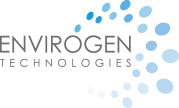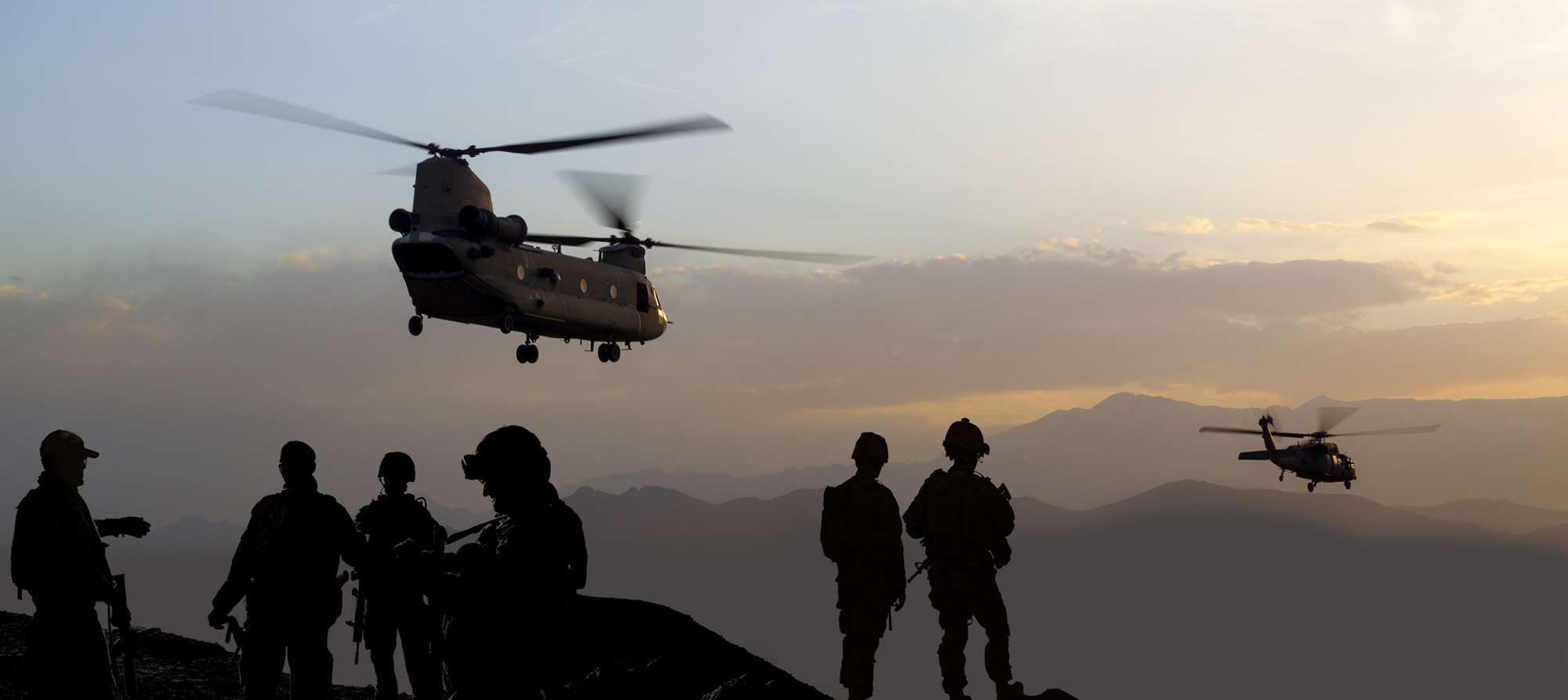Providing water and wastewater solutions for the military
Envirogen, a leader in the field, has been actively contributing to military water and wastewater projects for over three decades. With extensive experience and expertise, we have made significant strides in addressing the unique water and wastewater challenges faced by various branches of the U.S. military, federal organizations such as the Department of Defense (DoD), Department of Energy, and Environmental Protection Agency, and support contractors serving the military.
Our primary focus has been on providing innovative fluidized bed bioreactors and biofiltration technologies for remediation projects. These cutting-edge technologies have played a crucial role in addressing water and wastewater challenges within the military sector. We have also been at the forefront of developing and implementing mobile water treatment technology systems tailored for combat operations.
Envirogen can offer multiple treatment approaches for military clients, demonstrating our ability to remain neutral in our equipment recommendations. Our comprehensive solutions include:
• Fluidized bed bioreactor (FBR)
• Biofilter and biotrickling filters
• Combat water supply systems (CWSS)
• Regenerable ion exchange systems (SimPACK)
• Service capability to ensure the effectiveness and reliability of our solutions
Applications
Groundwater & Wastewater
| Contaminant/Issue | Technology |
| • Total Dissolved Solids • Nitrate/Chlorate/ Perchlorate • Metals: – Arsenic – Chromium – Selenium • Organics: – VOCs/cVOCs – 1.4-Dioxane – NDMA – PFAS/PFOS – Munitions |
• Regenerable Ion Exchange • Reverse Osmosis • Fluidized Bed Bioreactors • Advanced Metals Removal Systems |
Potable Water
| Contaminant/Issue | Technology |
| • Total Dissolved Solids • Nitrate, Chlorate, Perchlorate • Metals: – Arsenic – Chromium – Selenium • Organics: – VOCs/cVOCs – 1.4-Dioxane – NDMA – PFAS/PFOS |
• Regenerable Ion Exchange • Reverse Osmosis • Fluidized Bed Bioreactors • Advanced Metals Removal Systems |
Fats, Oils & Grease (FOB) Potable Water
| Contaminant/Issue | Technology |
| • Particles, Bacteria, Colloids • Total Dissolved Solids • Organics: – VOCs/cVOCs – 1.4-Dioxane – NDMA – PFAS/PFOS |
• Combat water supply systems (CWSS) • Regenerable Ion Exchange • Reverse Osmosis |
Fluidized Bed Bioreactor (FBR)
Envirogen has offered its biological fluidized bed reactor technology for military-related remediation efforts at both the pilot- and full-scale level across numerous military and DoD contractor sites.
Envirogen’s fluidized bed bioreactor is a fixed-film reactor in which the biological attachment media (sand or carbon) is suspended, or fluidized, within the reactor vessel by the upward flow of water through the system. Because the media particles are small and suspended, they present a large surface area for microbial growth and attachment where treatment of various contaminants occurs.
An overview of Envirogen’s patented fluidized bed reactor treatment process/fluidized bed reactor design. (US Patents: 6706521, 5750028, 5788842, 7754159, 7611890, 7572626, 8323496, 6830922).
The majority of FBR applications within the military sector involve remediation systems for groundwater contaminated with chlorinated solvents, nitrate, chlorate, perchlorate, RDX (Royal Demolition Explosive), and metals.
Envirogen has consistently stayed at the forefront of research and development to address the evolving needs of the military in their remediation efforts. Specifically, we have taken a leading role in the study of treating recalcitrant compounds or emerging contaminants such as nitrosodimethylamine (NDMA), 1,4-Dioxane, and tetrachloroethylene. Through these efforts, Envirogen has established itself as a pioneering solutions provider in this sector, ready to assist the military with emerging issues.
Examples of various FBR projects at military bases or associated DoD Contractors:

Biofilter / Biotrickling Filters
Envirogen offers air emission control abatement systems that rely on biological methods to reduce contaminants in air streams. The choice between a biofilter or a biotrickling filter, or a combination of both, is determined by the types and levels of contaminants present in the air stream. Each option has different operational parameters and design pH ranges, resulting in distinct ecosystems. Consequently, Envirogen customizes its emission control and odor abatement systems based on the expected influent contaminant constituents and the required effluent quality.
Biofiltration involves the use of microorganisms fixed to a porous medium to degrade pollutants present in an air stream. In biofilter technology, these microorganisms form a biofilm on the surface of the medium. As air passes through the filter bed, contaminants in the air phase diffuse into the biofilm as well as sorb onto the filter medium, where they undergo biodegradation. Biotrickling filters employ the same principles as biofiltration but include a recirculating water stream in the vessel to assist with maintaining optimal environmental conditions.
For military applications, these emission control systems have proven effective in treating a wide range of pollutants, including hydrogen sulfide, aldehydes, ketones, aromatics (such as benzene, toluene, and xylene), alcohols, ethers, esters, and organic acids. For instance, Envirogen installed one of the first biotrickling filters in the United States at Naval Air Station-North Island (San Diego, CA) in 2000 for odor and organic treatment, and it continues to operate successfully.
Another example was a biofilter installed at Tyndall Air Force Base (Panama City, FL) for the treatment of aromatics from spray paint booth operations. Such examples demonstrate Envirogen’s capabilities and experience with military applications to assess their air emissions, design/install a suitable bioreactor treatment solution, and meet their effluent requirements effectively.

Combat Water Supply Systems
Envirogen has a strong track record of supplying small-scale mobile water treatment modules to the military sector. These modules, known as Combat Water Supply Systems (CWSS), have been specifically designed for deployment in almost any conceivable, land-based location and indigenous environment.
The key to the success of CWSS lies in its adaptability to various water sources. The selection of process stages is determined by the specific characteristics of the water source, ensuring the delivery of a safe and potable drinking water supply for military personnel. These process steps may include:
- <1 micron filtration for removal of particles, bacteria, and colloids.
- Reverse osmosis to eliminate ionic species and reduce salinity.
- Carbon filtration for removing organics and pesticides.
- Remineralization to ensure the water produced is palatable.
- Chlorine dosing for disinfection purposes.
Envirogen’s combat water supply systems are designed as a combination of three separate interchangeable assemblies, with the system functions primarily operated using automated valves. This design approach significantly reduces the system’s complexity, rendering it highly suitable for operation in remote and challenging environments. The individual assemblies are easily lifted and interconnected using compression-fit flexible hoses, further simplifying deployment.
Regenerable Ion Exchange Systems - SimPACK
Envirogen specializes in advanced water treatment solutions, and offers a patented, regenerable ion exchange system known as SimPACK that could serve the military in remediation applications where biological treatment of water has limitations. In this process, Envirogen’s SimPACK ion exchange system can remove contaminants (e.g., nitrate, perchlorate, selenite, arsenate, etc.) from groundwater using our multi-resin bed design, operated in a staggered mode process.
In typical groundwater applications, contaminants are exchanged for chlorides on the ion exchange (IX) resin. Once a vessel reaches exhaustion and is removed from service, the SimPACK programmable logic controller (PLC) takes control of the regeneration process. It precisely regulates the flow of a sodium chloride (brine) solution for regeneration and rinse water into the IX vessels. Upon completion of the regeneration process, the vessels are rinsed using the treated effluent water in a cascading arrangement to minimize waste.
This innovative process not only addresses the challenges posed by emerging contaminants for the military sector but also reduces waste volume and salt usage, leading to a significant reduction in operational expenditure (OPEX). Additionally, Envirogen’s flexibility allows us to offer multiple treatment approaches to military clients, showcasing our commitment to delivering tailored solutions that meet their specific needs.
A fly-by of the containerized version of Envirogen’s SimPack system, including the salt/briner tank, two waste tanks, prefiltration, and ten (10) IX vessels.
Service Capability
Envirogen possesses the expertise, personnel, and qualifications necessary to support the military sector in the maintenance of their remediation systems. Our service offerings include flexible, long-term contracts that cater to our clients’ diverse needs, ranging from round-the-clock operational oversight to periodic, supportive team engagement.
With a nationwide presence in the United States and the operation of various hub remediation sites that we operate, Envirogen stands as a valuable resource for the military. We excel in assisting the military in reducing their overall operational expenditure (OPEX) while upholding the highest standards of operation quality.
Envirogen’s service track record in this sector speaks for itself, with successful engagements in several previous projects. Notable examples include Aerojet Propulsion, Whittaker Bermite, Naval Air Station-North Island, and Nammo Talley. The wealth of operational experience gained from these projects can seamlessly translate to other sites, irrespective of whether they incorporate Envirogen’s specific technology offerings.

